Name Roseann Quinn | ||
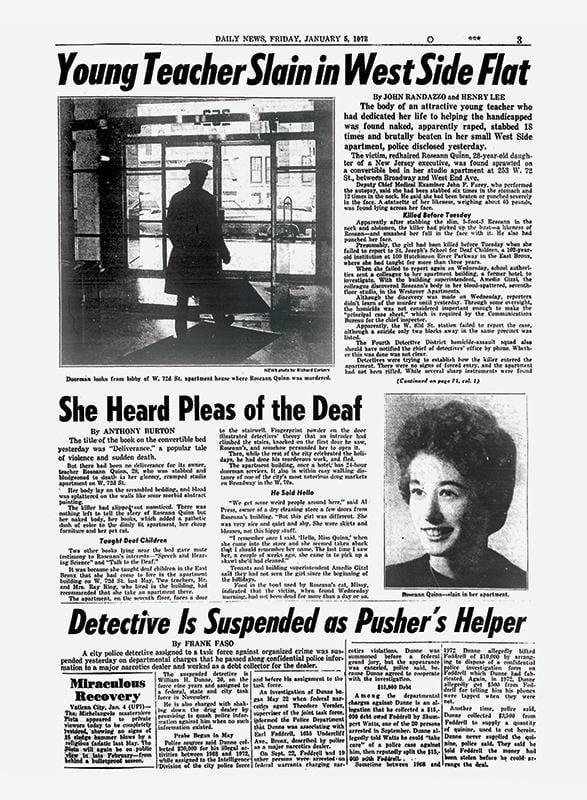 | ||
Similar People | ||
Roseann Quinn (November 17, 1944 – January 2, 1973) was an American schoolteacher in New York City who was stabbed to death in 1973. Her murder inspired Judith Rossner's 1975 novel Looking for Mr. Goodbar, which was adapted as a 1977 film directed by Richard Brooks and starring Diane Keaton. Quinn's murder also inspired the 1977 account Closing Time: The True Story of the "Goodbar" Murder by New York Times journalist Lacey Fosburgh. The case was the subject of a Season 3 episode of Investigation Discovery's series A Crime to Remember in 2015 ("Last Night Stand").
Contents
- Early life
- Career
- Alleged double life
- Murder
- Funeral
- Investigation and aftermath
- In popular culture
- References
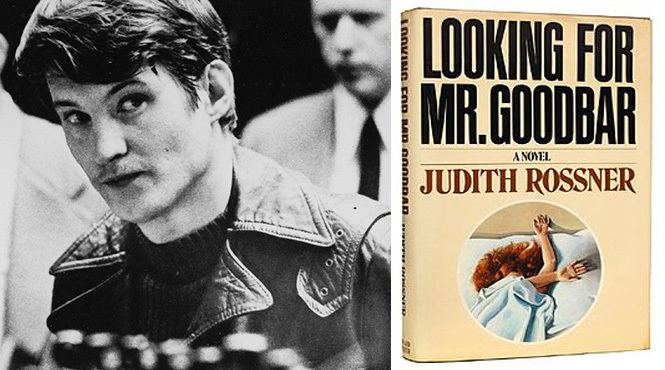
Early life
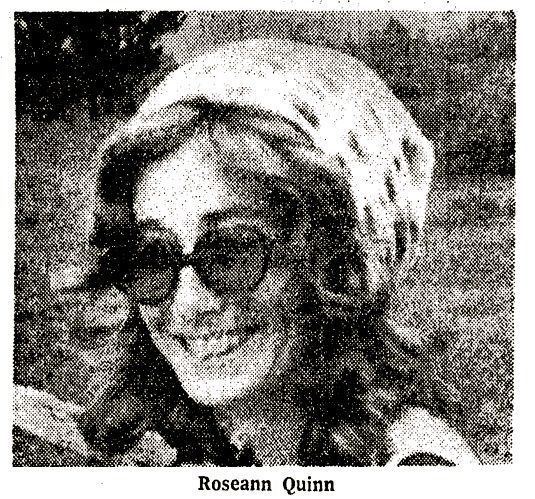
Quinn was born in 1944 in the Bronx to John and Roseann Quinn, Irish Americans. She had three siblings: two brothers, John and Dennis, and a sister, Donna. When she was 11 years old, her family moved to Mine Hill Township, near Dover, New Jersey. John Quinn was an executive with Bell Laboratories in Parsippany-Troy Hills. When she was 13, Quinn spent a year in the hospital after a back operation (due to scoliosis, see Arthur Gelb "City Room"), which left her with a slight limp. She attended Morris Catholic High School in Denville, New Jersey, graduating in 1962. Her yearbook said that she was "Easy to meet ... nice to know."
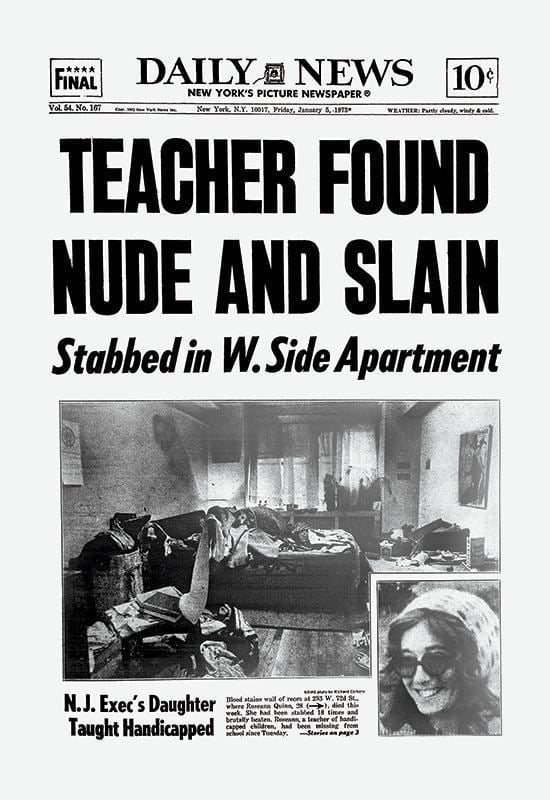
Quinn enrolled in Newark State Teachers College (now Kean University).
Career
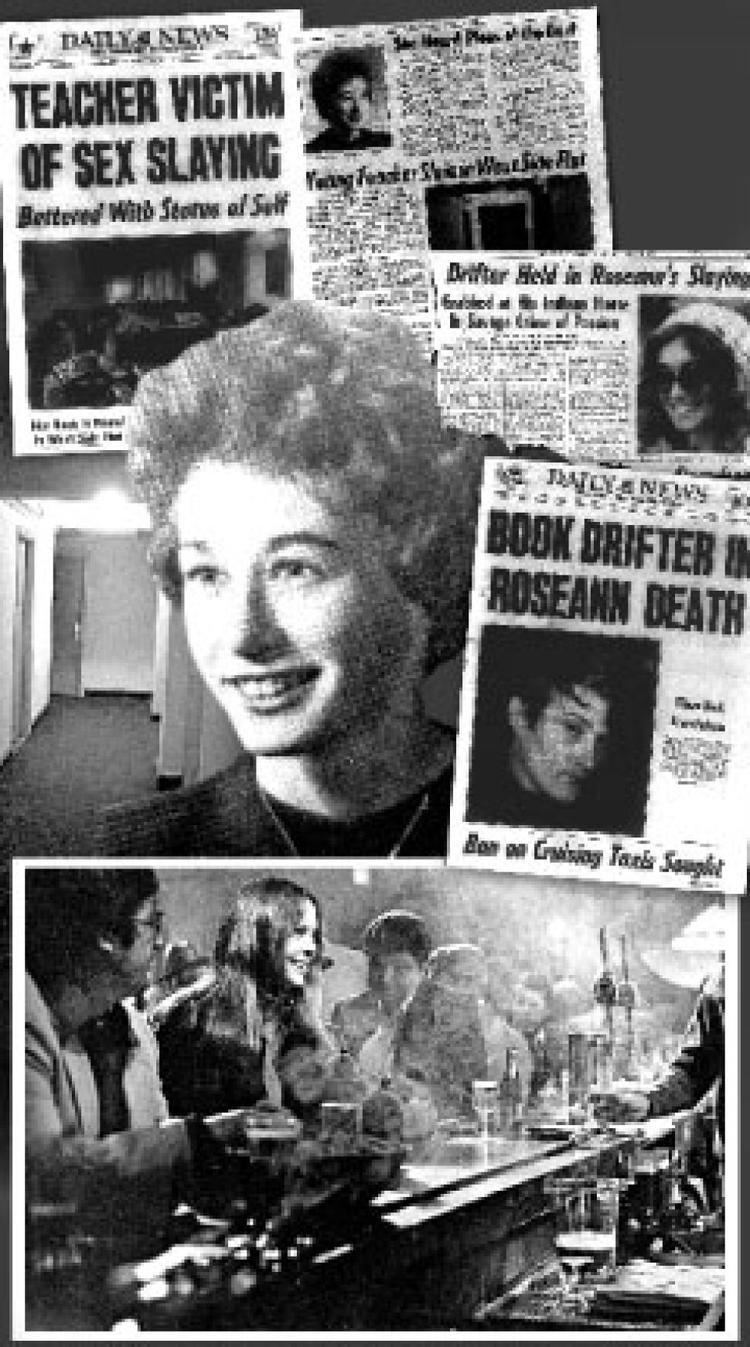
Quinn graduated in 1966 and soon moved to New York City, teaching for three years in Newark, New Jersey. In September 1969, she began teaching at St. Joseph's School for the Deaf in the Bronx, where she taught a class of eight eight-year-olds. Many times, she voluntarily stayed after school to help them, other teachers recalled. "The students loved her," a spokesman for the school would later say.
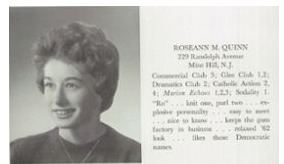
By May 1972 she had moved to a studio apartment at 253 West 72nd Street. The building had been known as the Hotel West Pierre before being converted to apartments four years earlier. According to her acquaintances and neighbors, Quinn would sit by herself and read at bars on the West Side, Police Captain John M. McMahon later said that "she was an affable, outgoing, friendly girl. Her friends were rather diverse. She knew teachers and artists and her circle of friends was a very large, interracial group ... She knew an awful lot of people." One friend who would later speak to the media said that she struck up a conversation with him by revealing that she had been reading his lips and following a conversation at the other end of the bar that she couldn't otherwise have heard.
Alleged double life
Quinn developed a habit of meeting and taking home men. Her next-door neighbor reported hearing screams coming from Quinn's apartment. Once she intervened and saw a man dashing out of Quinn's apartment yelling obscenities; she found Quinn disheveled and bruised, with a black eye, sobbing.
Quinn had been attending night courses at Hunter College, and by December 1972 had completed about half of her work toward her master's degree in her specialty of teaching the deaf. Later that month she attended the faculty Christmas party at St. Joseph's School and a party for the children the next day.
Murder
On the evening of New Year's Day 1973, Quinn went across the street from her apartment to a bar named W. M. Tweeds, where she met John Wayne Wilson. Wilson's friend, Geary Guest, left around 11:00 p.m., before Wilson met Quinn. Wilson and Quinn went to her apartment, where they smoked marijuana and attempted to have intercourse. As Wilson would later tell his attorney, he was unable to achieve an erection. He claimed that Quinn insulted him and demanded that he leave her apartment, and an argument ensued. After a struggle, Wilson picked up a knife and, according to his police statement, stabbed Quinn 18 times in the neck and abdomen.
After the murder, he covered Quinn's body with a bathrobe, showered, and left the apartment. Before leaving, he wiped his fingerprints off the murder weapon, the door knobs and any other surface he might have touched. Later that night, Wilson confessed the crime to Geary Guest. Believing that Wilson was making this all up to get a plane ticket home, Geary gave him enough money to leave town. Wilson first flew to Miami to pick up his wife, Kathy. They later flew to Indiana.
Quinn's body was not discovered until the morning of January 3. The authorities at St. Joseph's School, alarmed that Quinn had not shown up for work in two days or called, sent a teacher to her apartment to check up on her. The building's superintendent, Amedio Gizzi, let the teacher into the apartment, where they found Quinn's body. Her 25-year-old brother, John, later identified the body at the morgue.
Funeral
Quinn's wake was held at Bermingham Funeral Home at 249 S. Main Street, Wharton, New Jersey. Her funeral was held on January 6, 1973 at St. Mary's Church in Wharton, a mile from her family's home in Mine Hill. The funeral mass was led by Quinn's cousin, the Rev. John Waldron of St. Teresa of Avila Church in Brooklyn. She was buried at St. Mary's Cemetery, a quarter of a mile from the church.
Investigation and aftermath
In the days before DNA evidence, there was little to connect Quinn and her killer. No one at Tweeds knew the identity of the man she left with or could say what he looked like. The crime scene had been effectively sanitized. Desperate to crack a case that had been on the front pages for days, the New York City Police Department (NYPD) released a police sketch that ran in several New York newspapers on Sunday, January 7, 1973. The sketch was not of the killer, but of the accountant Geary Guest.
Guest was still not sure Wilson had committed the murder until he saw Quinn's name in the newspaper article. Fearing he might be charged as an accessory after the fact, Guest first called his friends Fred Ebb and Gary Greenwood, Ebb's personal assistant. Guest told Ebb and Greenwood that he could not tell them about what had happened on the phone, but it was the worst thing anyone could be involved with. He said he was going to California to see them and hung up. He arrived at Ebb's Bel-Air, Los Angeles, California home the next day; there, he told Ebb and Greenwood about Wilson and the murder. Guest said he had been out with Wilson and had left early because he had to go to work in the morning. He said when he woke up, Wilson had not returned to the apartment, and Guest became worried. Wilson subsequently arrived and confessed the murder to him, and Guest gave him money.
Ebb called Guest's therapist, Hadassah, in New York; she said she would contact an attorney and call him back as soon as possible. Shortly thereafter, she and the attorney called back; the attorney advised Ebb to put Guest on the first plane back to New York City. He also advised Ebb and Greenwood not to say a word about what Guest had told them. In mid-March, Ebb and Greenwood flew to New York City. It took more than two weeks to convince Guest to talk to the police, as Guest agonized over the fact that his information could send his friend Wilson to prison for life or to death row. Guest's lawyer contacted the police and got Guest immunity in exchange for revealing Wilson’s location.
NYPD Detectives Patrick Toomey and John Lafferty of New York's Fourth District Homicide Squad flew to Indiana, where, accompanied by Indianapolis Police Sgt. H. Greg Byrne, they arrested Wilson at his mother's house in Indianapolis. Wilson was brought back to New York and incarcerated in the Manhattan Detention Complex, known as the Tombs.
After spending some weeks in The Tombs, Wilson was sent to Bellevue Hospital Center on April 19 to be tested for childhood brain damage, which his attorney planned to claim as part of an insanity defense. Wilson stayed at Bellevue for several weeks, but the tests were never administered, and he was eventually returned to The Tombs. Though he had been diagnosed as suicidal, the cells for the suicide watch were full, so Wilson was placed in a regular cell on the fourth floor.
In May, Wilson got into an argument with a prison guard and threatened to kill himself. The guard taunted him by asking if he wanted sheets to do it with and later threw bed sheets into his cell. Wilson used those sheets to hang himself on May 5, 1973. An investigation was held into the circumstances of Wilson's death, but no charges were ever filed.
Feeling responsible for Wilson's suicide, Guest had a black-out. Ten days later, Ebb and Greenwood received a call from a mental institution just outside Phoenix, Arizona. Guest had flown to Phoenix and checked himself in as a John Doe. Shortly after Guest returned to New York City, the prosecuting attorney supposedly told him that if the case had gone to trial and Wilson was not convicted, murder charges would have been brought against Guest, though he was innocent.
In popular culture
The case has been depicted (or adapted) several times, including:
